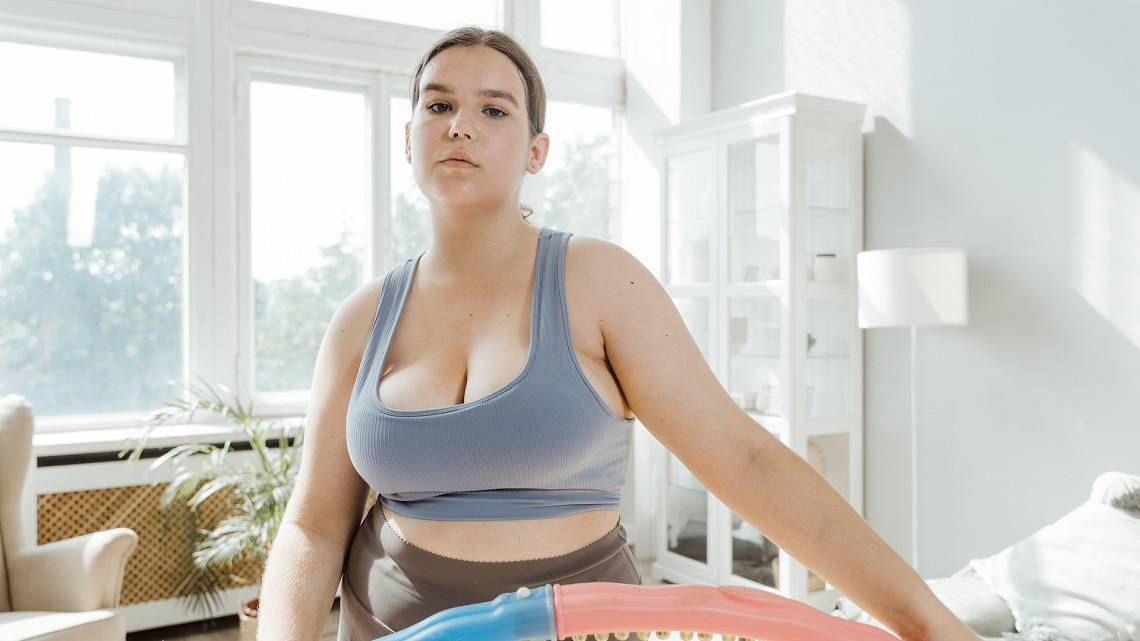Breast reduction is a surgical procedure chosen by patients with overly large breasts to address pain, discomfort, inability to exercise and other physical, emotional and self-image issues linked to breast size. It is one of the most common and rewarding plastic surgical procedures, with high satisfaction rates reported.
Breast reduction, known also as reduction mammaplasty, takes several hours to perform and reduces the size of the breast through the removal of excess breast fat, glandular tissue and skin.
This results in breasts more in proportion with the size of the body and less prone to pain and discomfort.
It also lifts and tightens the breasts, which are often sitting lower than desirable. The size of the areolas is also reduced.
Women who undergo breast reduction surgery want to alleviate the size of their breasts, achieve a more balanced breast shape and areola position, and live an active life comfortably. Many patient complaints associated with large breasts include the following:
- Overly large, heavy and pendulous breasts
- Back, neck or shoulder discomfort
- Stretched skin or “stretch marks”
- Enlarged or significantly low areolas
- Asymmetric breasts
- Limited mobility (physical activity)
- Intertrigo (irritation or rashes under the breast skin fold)
- Discomfort wearing bras
- nipples are sitting on the chest wall. Dr Sawhney will assess your individual situation, desires, and risk factors. He will then explain the options, relative risks, and benefits of each method before deciding on a plan that is best suited to your individual needs.
What Are The Procedure Details For A Breast Reduction

The anchor shaped reduction is the most common way of performing this surgery. The incision goes around the areola and proceeds downward along the natural curve of the area beneath the breasts.
Removal of the excess glands, fat and skin tissues take place next. The nipples and areolas are then moved into their new positions. Shaping and replacement of the skin takes place next, but usually only after excess fat tissue is removed from the armpits if necessary. It’s very rare to have a situation where the nipples are not reattached to the nerves and blood vessels, which would cause a loss of sensation if left unattached.
Once the procedure is complete, you’ll be wrapped in a surgical bra over the dressings. In most cases a small drain tube is used to help carry away blood and fluids for the first day. There can be some pain involved during the healing process especially when you move around. This is completely normal and will subside quickly as you heal, the more you pay attention to the diet and health advice the sooner the healing will be complete and the pain will subside earlier. Your surgeon will also prescribe a pain relief medication in most cases.
For standard cases, the surgery will go as follows:
- ANESTHESIA The patient will be placed under general anaesthesia in order to be completely asleep during the procedure. The breast reduction is typically considered an outpatient procedure; however, some patients may require an overnight stay.
- INCISION The surgeon will make an incision using one of these techniques – an anchor incision (traditional incision that is made around areola, vertical down the breast, and then horizontally along the crease); or a vertical incision (around the areola and vertical down the breast for less scarring)
- BREAST REDUCTION Fat, tissue, and any excess skin are removed from the lower portion of the breast. Women with mostly fat tissue in the breasts could just require liposuction to reduce the breast size, which results in less scarring, less breast tissue trauma, and less chance of health complications occurring.
- NIPPLE PLACEMENT The nipple will be repositioned higher up on the breast. The surgeon may or may not need to remove the nipple from the breast and then graft it in the correct place. Usually, women with very large breasts require the nipple to be removed to be repositioned. The surgeon will inform the patient whether or not nipple sensation will be lost as a result.
- CLOSE INCISIONS The surgeon will close the incisions using sutures. Various techniques may be used for sealing the incisions that your surgeon will discuss with you prior to the surgery.
Bandages will only take about one week before being removed but the surgical bra will have to remain for the 8-12 weeks. This will help maintain the shape of the breasts and protect them until the swelling and the bruising are reduced to normal. Stitches stay in for at least one week and sometimes can remain for two or more weeks. Almost all cases involve dry skin after surgery. Your first menstruation after the procedure may cause your breasts to swell. This has been known to cause shooting pains that will come and go for the next couple of months. It’s not as painful as it sounds but you will notice it. There will also be some loss of feeling in your nipples and skin caused by this swelling but usually fades no more than six weeks or so afterwards.
Do I need a Breast Reduction?

- You may be a good candidate for a Breast Reduction (Reduction Mammaplasty) if you have:
- Breasts that are overly large and seem to be out of proportion to the rest of your body
- Pain in the neck, back, and shoulders caused by the weight of your breasts
- Grooves in the tops of your shoulders caused by your bra straps
- Difficulty engaging in exercises and other activities of daily living due to your breast size
- Reduced confidence or self-esteem due to the unusual size of your breasts attracting unwanted attention.
Is a breast lift included in a breast reduction?
Breast lifts and breast reductions are similar. Breast Reduction Surgery involves reducing size or weight while Breast Lift typically changes shape not weight. A breast lift removes excess skin to achieve a younger breast contour while a breast reduction removes excess skin, fat, and tissues to achieve well-proportioned breasts. A Breast Reduction typically includes a Lift, but a Lift does not always include a Reduction.
How big do breasts need to be for reduction?
You could have any largish breast for a reduction, however patients with DD, DDD or G and H cups breast size are very good candidates for breast reduction. The surgeon will also assess other factors such as your health and desired cosmetic goals.
How long does swelling last after breast reduction?
Swelling after breast reduction can last for about three to six months. This can be controlled by wearing compression garments and taking the prescribed medications. In addition, further swelling can also be prevented by avoiding heavy lifting and other vigorous activities.
Are breast reductions permanent?
Yes, the tissues removed from breast reduction will never grow back. However, significant weight gain and pregnancy can still affect the results of a breast reduction by increasing the size of your breasts with extra fat.
Do breasts grow back after reduction?
They are unlikely to grow back to the same large size. However, factors such as pregnancy and significant weight gain can cause your breasts to get bigger again.
My nipple sensation is different, and in particular one nipple is more sensitive than the other, is this normal?
This is very common and we find that it is not uncommon for the nipple sensation to return in an uneven way -where one nipple is more sensitive. You may find that in the early stages after surgery that your nipples may be incredibly sensitive. Over time your nipple sensation will settle all by itself with no further treatment.
How small can you go with a breast reduction?
You can go as small as you want with breast reduction. The main restriction is ensuring there is enough breast tissue to retain blood supply to the nipple.
Any reduction in breast size below this point can result in not enough blood being delivered to the nipple. This can cause areola/nipple necrosis or loss of the areola/nipple itself. The surgeon will advise you of this
Will this surgery help my neck pain?
Overly large breasts can cause neck pain. Heavy, large breasts pull down on your neck, shoulders and upper back and can result in chronic pain and migraines. Removing part of the breast tissue will help to reduce this strain and should in turn reduce your neck pain.
Will this surgery improve my shoulder pain?
As above, the answer is yes, reducing your breasts can help you reduce pain.
Large, heavy breasts cause your skin to sag. This puts an increased weight on your shoulders and often leads to women slouching their shoulders. By reducing the weight of your breasts, it is common to feel relief of shoulder pain.





